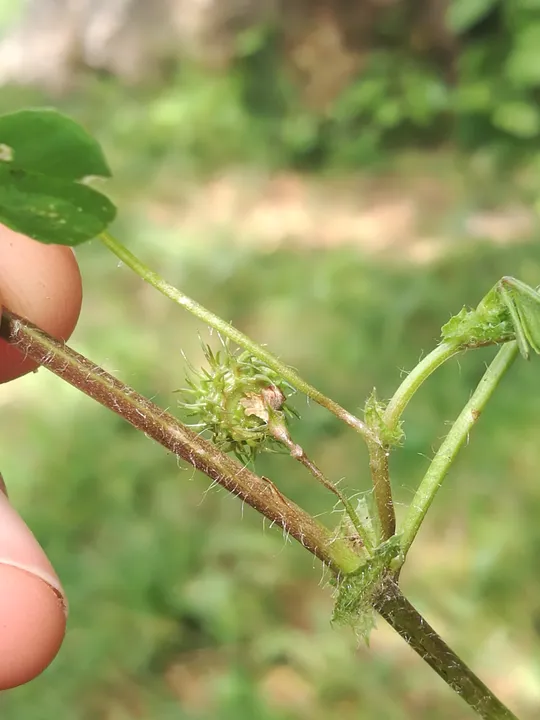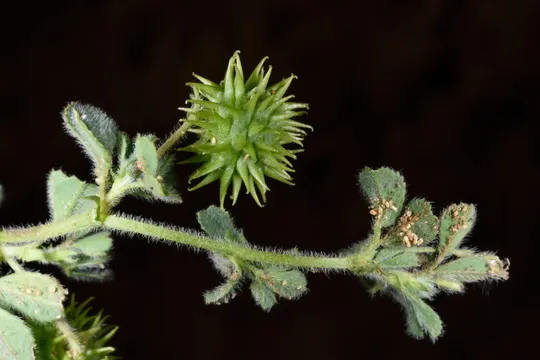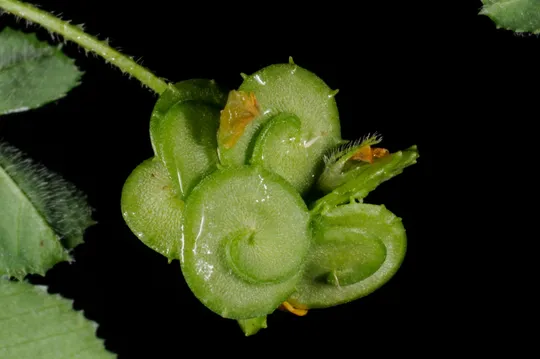Anthyllis vulneraria
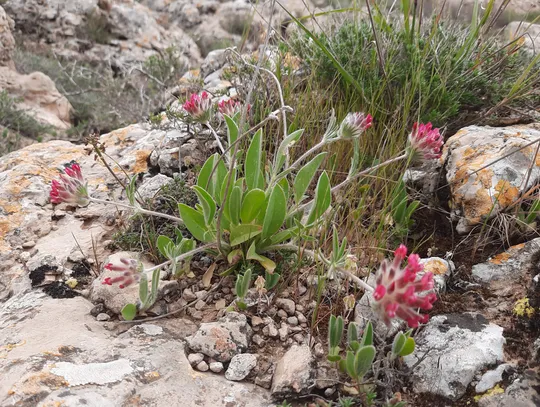
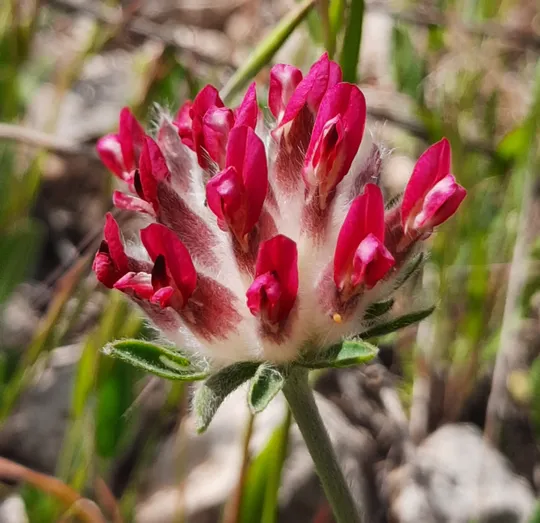
Tripodion vulneraria grows only in
the Judean Mountains in the region of the city of Hebron. Yair Or first
discovered the species near the Hebron Police Station in 1972 , collected a 35
mm long plant section (!) with a pink flower and since then no other specimens have
been located there. In 2000, during a joint Israeli-Palestinian advanced botanical
study course the plant was found east of Kiryat Arba, above Highway 60, east of
elevation point 978 called "El Galgil ".
Open woodland
margins of Quercus calliprinos on rocky calcareous slopes, where snow
falls every year in winter. The site is located on a northwestern slope at an
altitude of 920 meters, near the eastern transition zone shrubland of Mount
Hebron, where a large number of Irano-Turanian species typical of steppe
climates with snowy winters, e.g. Hueblia calycina, Ziziphora tenuior
and Viola modesta.
The genus Tripodion includes 20
species which all grow in the European continent and a single species that
deviates to the Macaronesian Islands. There are six species of Tripodion in Turkey and
only two in Israel. Most of the species in the genus are herbaceous perennials
or annuals and only a few are shrubs. The species in the genus have a swollen membranous
calyx containing a siliqua that does not open, usually with a single seed,
unlike most Papilionaceae which have a pod that
contains a few or numerous seeds. In recent years, the scientific name of the
genus was changed from Anthyllis to Tripodion. This is confusing
and the justification for the change is questionable.
Tripodion
vulneraria is known for its great morphological variability: 35
subspecies were described in the world and this is the largest number of
subspecies known of one species. The same species includes perennial growth
forms with woody bases in alpine populations alongside annual forms that grow
in disturbed habitats. These morphological differences are not reflected by
separation into different species, because in nature there are many transition
populations in which intermediate forms between the subspecies are found. In
Turkey alone six different subspecies were described, two of which are endemic
to the Mediterranean Basin and Greece. Another interesting aspect is the great variability
in the color of the flower: Tripodion
has subspecies with pink, yellow and creamy white flowers. In the Alps there
are populations growing together that have different colored flower. The pink
color is the most common, and indeed this color is also found in the Hebron population.
T. vulneraria has not been included so far in the
Flora and plant guides of Israel for it was found in Israel only in the 1970s
and there is no specimen in the herbarium.
·
Tripodion
vulneraria once grew at two sites, and has disappeared from one of
them.
·
Its populations
are very small and only four specimens were counted but there may be more plants
present at the site.
·
The proximity to
Route 60 and the extensive earthworks conducted nearby threaten the tiny
population, which is also endangered due to its small size.
·
T. vulneraria
is not protected in a nature reserve.
·
The species is extremely
common in northern countries and is not in danger of extinction.
Awareness to the
importance of the Tripodion vulneraria site should be
developed and a way found to protect the population and to monitor it.
Tripodion vulneraria is found in the
Mediterranean European countries, the Central European countries and the
Caucasus, Turkey, Cyprus (but is not noted in the Flora of Cyprus), Western
Syria and Israel. It is interesting to note that it does not deviate eastward
into northern Iraq and northwest Iran like many other Mediterranean plants do.
Tripodion vulneraria is an extremely rare perennial herbaceous plant growing only at a single site in the Hebron area. This population, the only one in Israel, and the southernmost in the world, is extremely endangered.
Current Occupancy Map
| 1000 squre meter pixel | 5000 squre meter pixel | 10000 squre meter pixel | |
|---|---|---|---|
| number of observations | 0 | 0 | 0 |
| in total pixels | 0 | 0 | 0 |
| Family | Fabaceae |
| Classification | On the endangered species list |
| Ecosystem | Mediterranean |
| Chorotype | Mediterranean – Euro - Siberian |
| Conservation Site | East of Hebron |
| Rarity |
1
6
6
|
|---|---|
| Vulnerability |
0
3
4
|
| Attractiveness |
0
0
4
|
| Endemism |
0
0
4
|
| Red number |
1
5.3
10
|
| Peripherality | N |
| IUCN category | DD EW EX LC CR EN VU NT |
| Threat Definition according to the red book | Critically endangered |
 Based on:
Based on:

